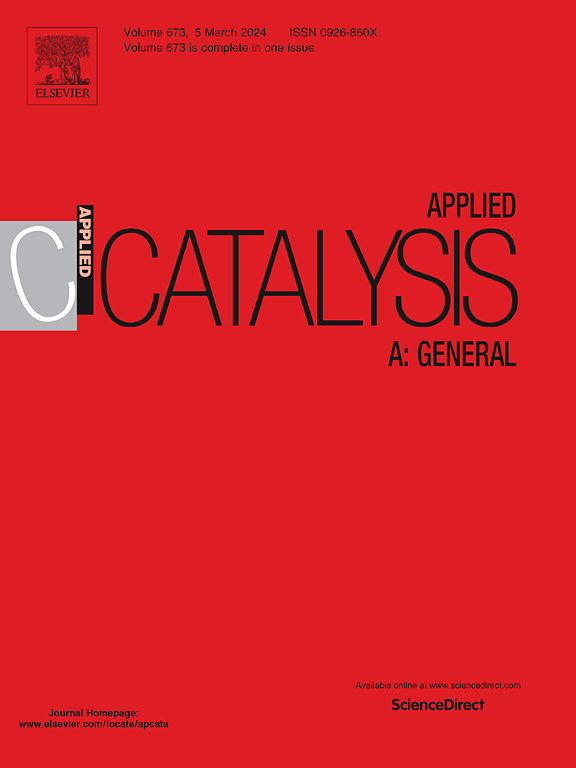Pt催化剂催化分解硝酸羟铵配位数依赖性研究
IF 4.8
2区 化学
Q2 CHEMISTRY, PHYSICAL
引用次数: 0
摘要
为了揭示活性金属结构与硝酸羟胺(HAN)的吸附、活化及其分解性能之间的关系,羟胺被认为是一种有前途的低毒性航天器单一推进剂,xPt/Al2O3在不同Pt负载(x = 0.1,0.5,1和2,表示Pt的质量百分比)下的性能在水溶液中进行了评估HAN(10 wt%)分解。结果表明,随着Pt负载的增加,xPt/Al2O3的NH3OH+转化率和TOF均有所提高,而在低于120℃的温度下,NO3-几乎不发生转化,其中2Pt/Al2O3在120℃左右的NH3OH+转化率接近100% %,NH4+选择性为20 %,N2O选择性为80 %,表现出最好的活性。这是由于随着负载的增大,其粒径增大,使得Pt配位数增加,且Pt位足够连续,有利于N-O、O-H和N-H键的断裂,从而使NH3OH+活化转化为NH4+和N2O。本文章由计算机程序翻译,如有差异,请以英文原文为准。
Coordination number dependence of Pt catalysts for catalytic decomposition of aqueous hydroxylammonium nitrate (HAN)
To uncover the relation between active metals structure and the adsorption, activation as well as its decomposition performance of hydroxylamine nitrate (HAN) that has been considered to be a promising low-toxicity monopropellant for spacecrafts, the performance of xPt/Al2O3 with various Pt loadings (x = 0.1, 0.5, 1 and 2, indicates the mass percentage of Pt) was evaluated in the aqueous HAN (10 wt%) decomposition. It was found that the both the NH3OH+ conversion and the turnover frequency (TOF) enhanced as Pt loadings increased while NO3- was hardly converted at the temperature of lower than 120 ℃ for xPt/Al2O3, and 2Pt/Al2O3 exhibited the best activity with almost 100 % NH3OH+ conversion, 20 % NH4+ selectivity and 80 % N2O selectivity at around 120 ℃, respectively. This originated from the increased Pt coordinated number of active sites with sufficiently continuous Pt sites caused by its enhanced particle size with loadings, which was beneficial to the cracking of N-O, O-H and N-H bonds together thus the activation and conversion of NH3OH+ to NH4+ and N2O.
求助全文
通过发布文献求助,成功后即可免费获取论文全文。
去求助
来源期刊

Applied Catalysis A: General
化学-环境科学
CiteScore
9.00
自引率
5.50%
发文量
415
审稿时长
24 days
期刊介绍:
Applied Catalysis A: General publishes original papers on all aspects of catalysis of basic and practical interest to chemical scientists in both industrial and academic fields, with an emphasis onnew understanding of catalysts and catalytic reactions, new catalytic materials, new techniques, and new processes, especially those that have potential practical implications.
Papers that report results of a thorough study or optimization of systems or processes that are well understood, widely studied, or minor variations of known ones are discouraged. Authors should include statements in a separate section "Justification for Publication" of how the manuscript fits the scope of the journal in the cover letter to the editors. Submissions without such justification will be rejected without review.
 求助内容:
求助内容: 应助结果提醒方式:
应助结果提醒方式:


